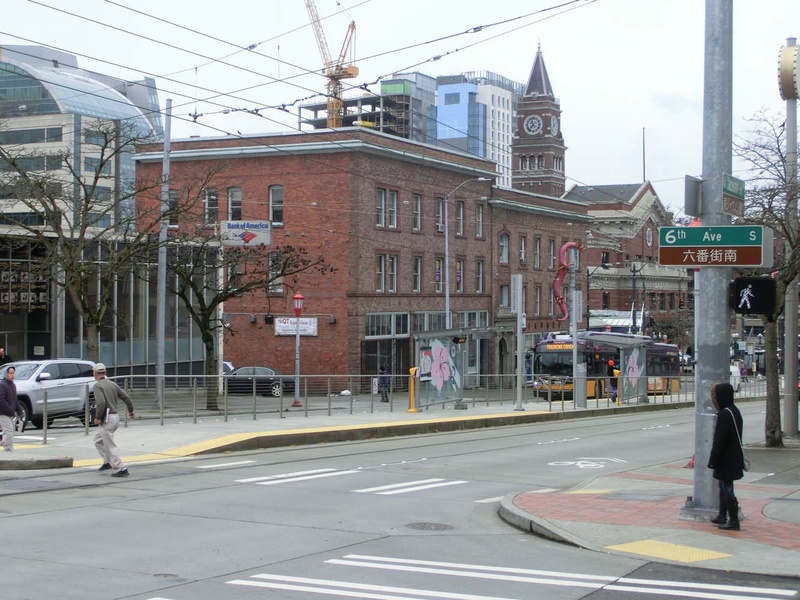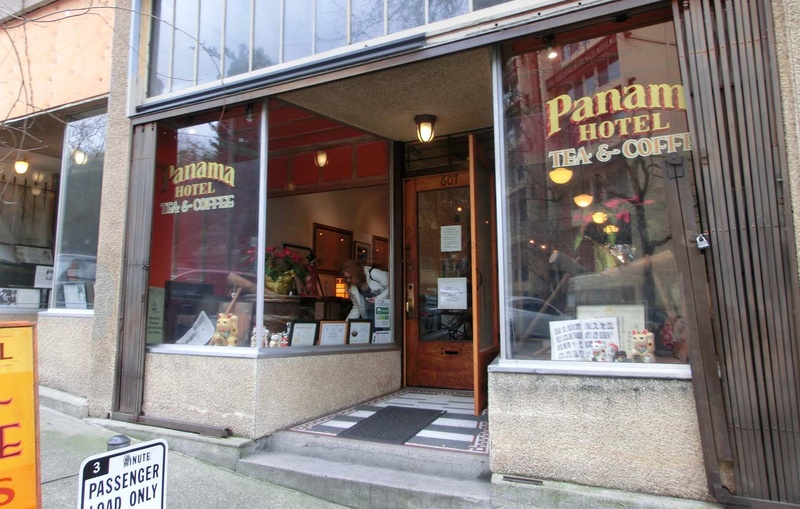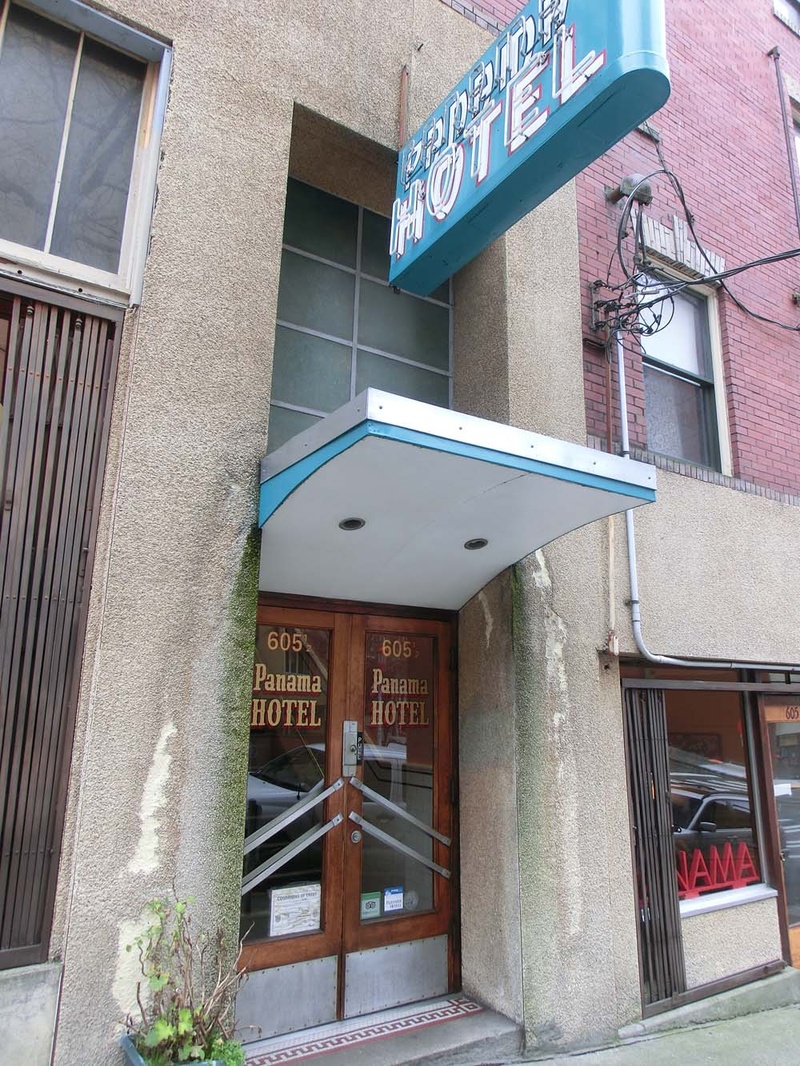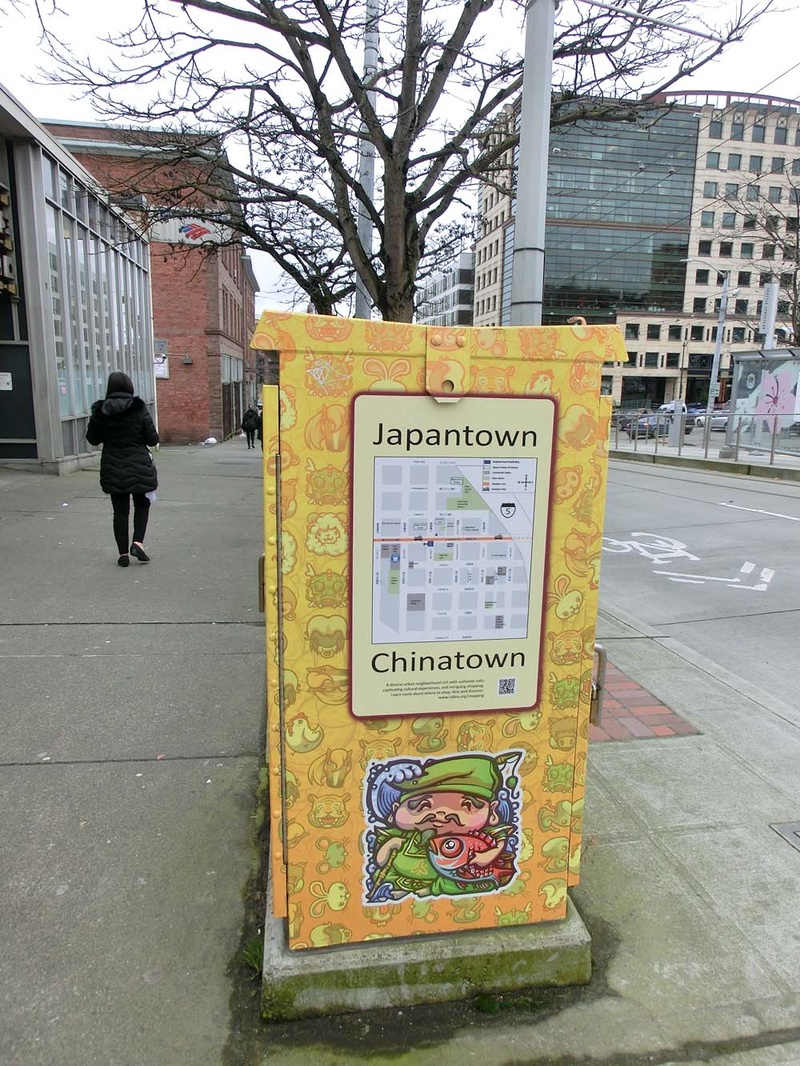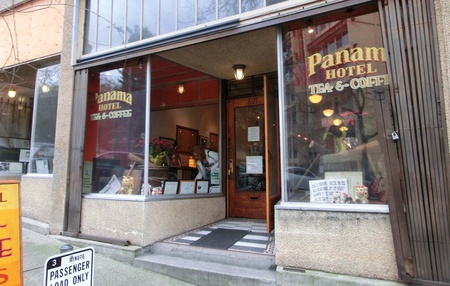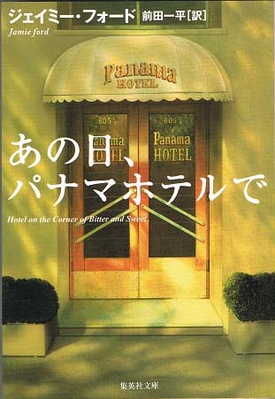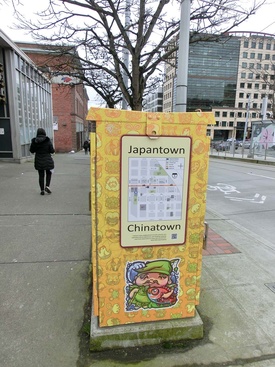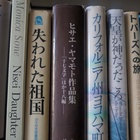Seattle has an old Japanese community. What was once Japantown is now called the International District, and is a city that is like a mix of Chinatown and a little bit of Japantown.
The street signs are now written in Japanese and Chinese, in addition to English, and the city's intention to preserve the historical heritage of the entire area is apparent. As described in Kafu Nagai's "Amerika Monogatari," a town that was very much like Japan was formed by immigrants towards the end of the Meiji period, but after the war, it completely changed shape and the Japanese influence faded.
However, there are still many Japanese things remaining, including the famous supermarket Uwajimaya, Japanese restaurants and souvenir shops here and there. One of these is the Panama Hotel.
Built in 1910 by a Japanese architect, this hotel welcomed many Japanese immigrants. However, after the war, the hotel closed in 1950. It seems to have remained untouched for a long time after that, but in 1986, a white woman of Scandinavian descent named Jean Johnson, who lives in Seattle, bought it.
She is also an artist, and has reopened the hotel with respect for Japanese American culture. At the same time, she opened a cafe on the first floor, displaying photographs that tell the history of Japanese Americans in Seattle, as well as items related to their lives and culture. She created a themed cafe with an Asian flavor.
About 10 years ago, I stayed at this hotel out of curiosity. I remember being impressed by the facilities and interior design, and feeling like I had traveled back in time. It wasn't exactly comfortable, but as a historical heritage, it makes sense.
This introduction has gotten quite long, but the novel "That Day, at the Panama Hotel" (Shueisha Bunko) is one in which this symbolic hotel in the old Japantown appears as a "witness" to a story spanning several decades.
The author is Jamie Ford. The original title is "Hotel on the Corner of Bitter and Sweet". It was published in the United States in 2009, became a bestseller, and has been translated into many languages around the world. It was published in Japan at the end of 2011.
It is the story of a young love that blossomed and faded away during the war, and the outcome of that love. The story takes place at the start of the Pacific War and in 1986, some 60 years after the war. The story moves back and forth between the two time periods.
The protagonist, Henry, is a second-generation Chinese American boy. His father is saddened by the Japanese military's bombing of his hometown, Chongqing, and is raising funds in Seattle to support the Nationalist army fighting the Japanese in China. He loves his country and hates Japan.
The same hatred is directed towards Japanese people in the United States. Despite this, the son becomes friends with a Japanese girl named Keiko. The two of them attend an all-white school, and are both bullied and discriminated against by their white classmates.
Henry has difficulty communicating with his nationalistic father. He rebels against his father, who is against his relationship with Keiko because she is Japanese. The two are attracted to each other, but after Pearl Harbor, Keiko's family is sent to a faraway internment camp in Idaho. They promise to meet again, and Henry continues to send her letters, but for some reason he stops receiving replies.
Decades pass, and Henry marries another woman and has a son. After his wife dies, Henry retires and lives an empty life. Then he learns that the Panama Hotel, which has been closed for many years, has changed owners and the belongings of a Japanese family that had been stored and forgotten for many years have been discovered.
Before entering the internment camps, Japanese Americans were not allowed to take anything with them, so they left some things at this hotel. Henry thinks that there might be something there that is a memory of the two of them and that is connected to Keiko. And he finds it. The past comes back to him, and he gradually fills the gap between his past and his present.
Novels written by Japanese Americans about the war and internment camps naturally question and depict the relationship between Japan and the United States, and between Japanese Americans and Americans, from the perspective of the Japanese Americans. However, it was not only Japanese Americans who had complicated feelings about the war; many minorities in China, Korea, the Philippines, and other countries who were caught up in Japan's wars also had similar feelings.
Author Ford, born in 1968, grew up in Seattle's Chinatown as a child and later lived in Hawaii for six years, and captures the background of this story from two perspectives, one of Japanese and one of Chinese. There must have been many untold stories of love between people of different nationalities and ethnicities, as in this novel.
The story was created by skillfully capturing this historical background and verifying the facts, but the reason it has captivated so many people is that it is permeated with a melancholic, bittersweet sense of nostalgia for one's younger days.
The translator, Maeda Ippei, who volunteered to translate the book after what could be described as a fateful encounter, writes the following in his afterword:
"The author's creative ability to portray a good sense of sentiment and nostalgia without delving unnecessarily into the historical and social issues that form the background of the novel is superb."
The Panama Hotel is now up for sale, and the owners are looking for a buyer, but hopefully the old hotel perched on top of a small hill will be able to remain as it is.
(Titles omitted)
© 2017 Ryusuke Kawai


